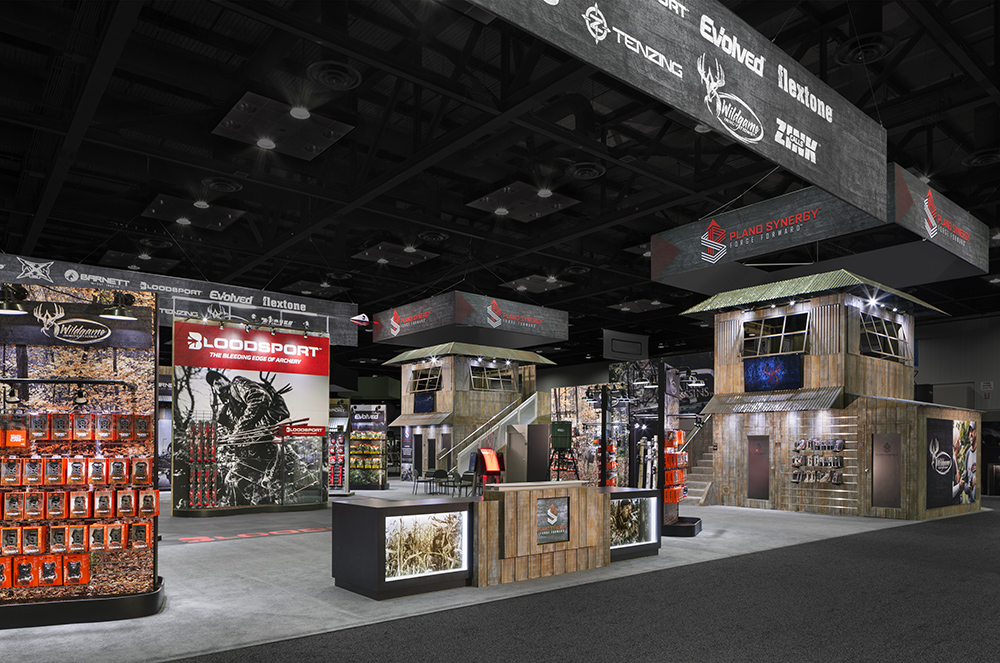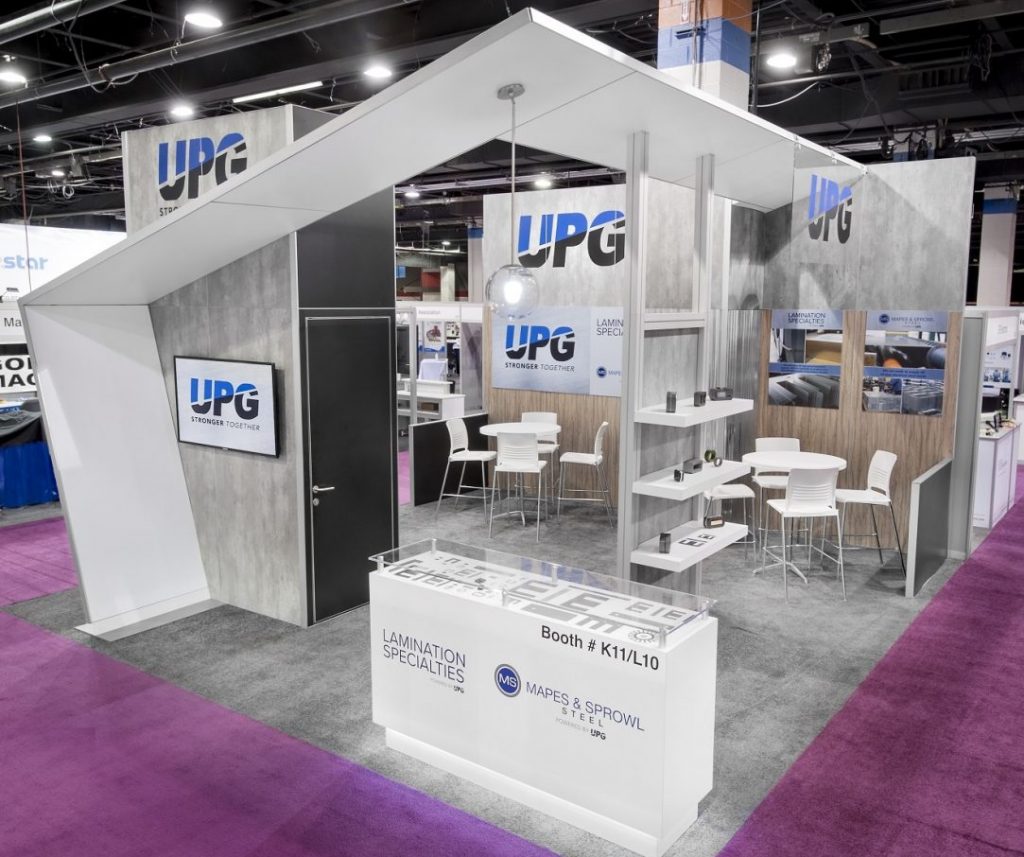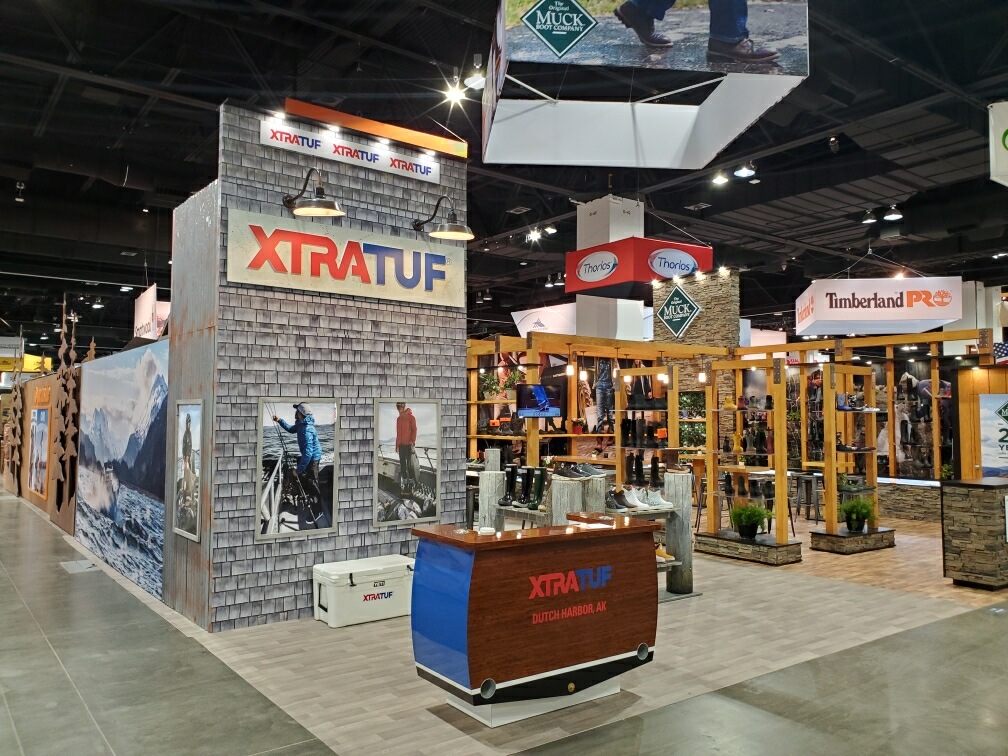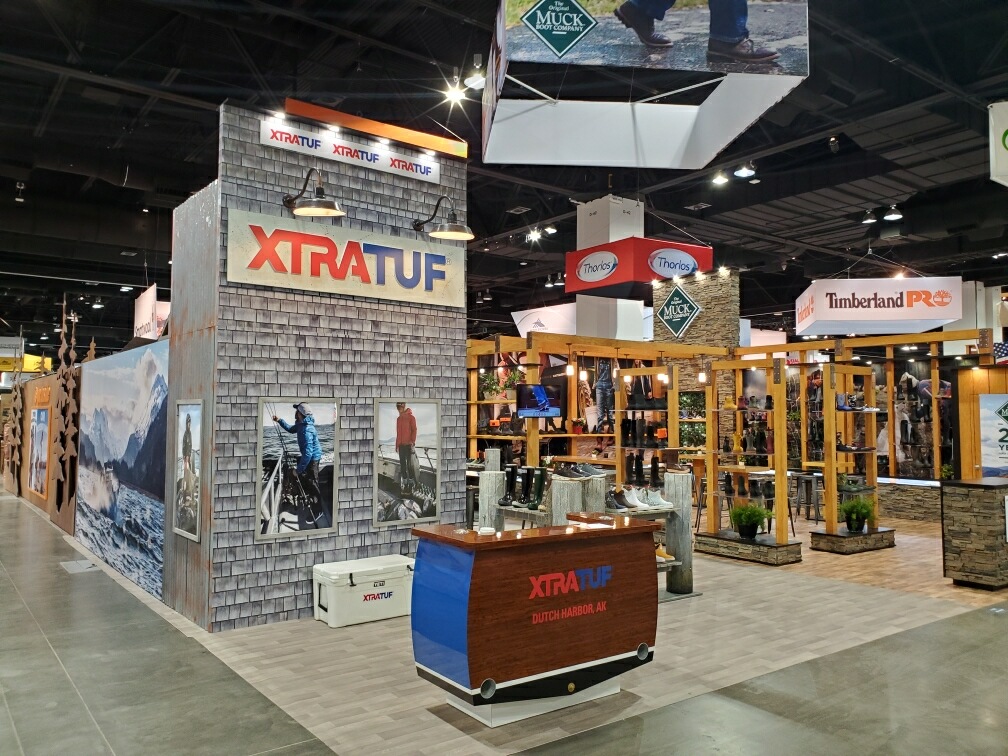Recently, we’ve been seeing a bit of a trend among larger clients to combine multiple brands and product lines into one exhibit, where they previously might have had two to four separate brand exhibits. We explore some of the factors influencing this trend:
Cost
One of the largest driving forces behind this shift is cost, plain and simple. According to CENTER FOR EXHIBITION INDUSTRY RESEARCH (CEIR) the cost of exhibit space is the largest portion of any exhibit expense. In 2019, space rental comprised 32% of the average budget… a percentage which has fluctuated as high as 38% in recent years. On average, the exhibit space rental consumes more budget than exhibit design, graphics, show services and travel combined. Multiple booth spaces require a higher investment one-time show space rentals, than rental of one large space does.
Exhibit Synergy
Honeywell brands XtraTuf and Muck Boots offer similar protective footwear products to different markets. The XtraTuf brand targets rugged fishing and marine markets, while Muck Boots has a wider appeal to those who want stylish yet functional footwear for general outdoors activity. Although the philosophy behind the two brands differs, both product lines “ …allow people to live, work and play in the harshest conditions,” according to David Mesicek, CMO of Honeywell Retail. This commonality led to the decision to share exhibit space. The single exhibit space is visually delineated into the two brands, allowing show attendees to engage with either or both brands at their preference while providing overall cost savings to Honeywell.
Cross-Selling Opportunities
Our client Plano Synergy makes the most of a multi-brand space with the abundant cross-selling opportunities that arise when brands are connected. Plano offers products across sixteen distinct brands aimed at hunting and fishing enthusiasts – from storage to optics to camouflage products and lures. Corporate branding is featured on an overhead hanging sign, reception desk and peripheral graphics. Inside the exhibit, Plano sub-brands have individual kiosks which reflect the subtleties of each brand, but are unified through consistent material treatments and similar structural elements. Show attendees can easily assess the full range of products Plano offers for their interest.

Master Brand Promotion
It makes sense to combine brands in one space when consistency of corporate brand becomes paramount. Acer client UPG recently debuted a new master branding scheme. Historically, the client had loose branding and little unifying its six sub-brands. For this show, the newly-formed corporate events team needed to launch the new UPG master brand, but the exhibit had to feature two well-established and easily recognizable sub-brands. These sub-brands were prominently visible on the exhibit reception desk and interior wall, bringing the required recognition those brands carried while clearly deferring to the overarching master brand.

Better Data
Another reason for combining brands is the emergence of engagement technology. Attendees are now more trackable than ever as technology can take consumer insights to a granular level. Better data allows for more specific targeting from the corporate level; organizations don’t need separate brand spaces to distinguish brand preferences. Technology allows exhibitors to track dwell times at specific points in the exhibit, incentivize through gamification, and gather preference insights far beyond business card scanners… all of which can be accomplished in a single space.
Our prediction is that exhibit space sharing among related brands will continue to grow, as exhibitors seek improvements in show ROI based on analytics of increasing actionable data gathered on the show floor.
(All exhibits shown here are designed, fabricated and serviced by Acer Exhibits & Events.)



